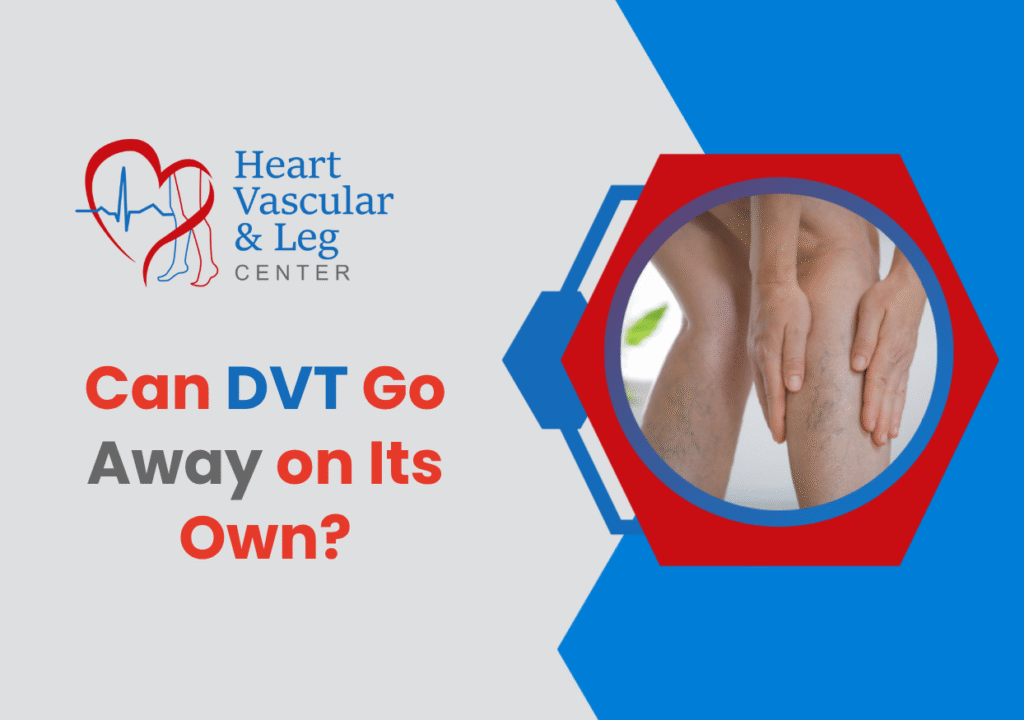
You’re probably here because someone mentioned DVT. Or maybe you got diagnosed and you’re trying to figure out what comes next.
The big question everyone asks is whether a blood clot will just disappear on its own. Let’s get right into it.
DVT stands for deep vein thrombosis, which is when a clot forms in one of the deeper veins within the body, typically in the leg.
Not those you can see on your skin. The big, deep hidden ones in your muscle tissue.
That’s quite similar to if a dam were to form across a river. Blood circulation either stops or slows down, at which point the problems begin.
You may feel some swelling in your leg or pain or the skin may feel warm and look slightly off. At times, however, you may feel nothing at all, which really makes it trickier.
Technically, your body might break down a small clot by itself.
But here’s where it gets serious: you really don’t want to roll the dice on this one.
A clot could grow. More so, it could detach and go to your lungs, and this could worsen things.
So while there is a chance that the clot may go away on its own, the cost of waiting to find out is far too high.
Getting treatment isn’t just about getting rid of the clot. It’s about making sure nothing worse happens while your body works on it. Here’s what treatment does:
Most people get put on blood thinners. These do not dissolve the clot but only maintain homeostasis while the body itself disposes of it.
This takes a while, generally a few months.
Read more: Why Accurate Diagnosis Matters in Vascular Disease
If you don’t treat DVT, you’re looking at more than just the immediate danger.
The clot can damage the valves in your veins, and that can lead to years of swelling, pain, and skin problems. Some people end up with sores that won’t heal properly.
We’ve been treating people with vascular problems here in Bakersfield for over 20 years.
Dr. Kumar and the rest of us at Heart Vascular & Leg Center have seen what happens when people wait too long. It’s always easier to deal with issues early.
We don’t make this complicated. You come in, we talk about what’s going on, and we figure out the best way forward. Most of what we do is minimally invasive, which means:
How long you’re on treatment depends on a few things: where the clot is, what caused it, whether this is your first time dealing with it. We’ll work all that out together.
Read more: What to Expect During a Vascular Ultrasound
If you think something’s up with your leg, don’t sit around wondering about it. And if you already know you have DVT, get it looked at.
The faster you deal with this, the better off you’ll be.
You can find us at 5020 Commerce Drive in Bakersfield.
Give us a call at (661) 324-4100. We’ve helped a lot of folks in Kern County with this exact concern, and we’re here to help you figure it out too.
Come see us. Let’s get this taken care of.
Should I go to the doctor right now?
Yes, DVT needs medical care. Don’t put it off!
How long am I stuck taking medication?
Usually a few months. Could be three, could be six. Depends on your situation.
Can I still exercise?
Once you’re on treatment, light activity is usually okay. We’ll tell you what’s safe.
Will this happen again?
It can. That’s why we focus on keeping it from coming back.
© Copyright 2024 Vascular Health Partners LLC. All Rights Reserved
Designed By CyberWorx